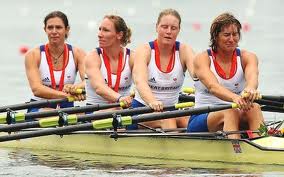
Standard economic theory is a good place to start (though it will not provide all the answers). Economic theory assumes that people prefer leisure to work and are self-interested. Team incentives therefore fall victim to the “free rider” problem.
If all team members are rewarded for the team’s output, then there is little incentive for a self-interested, leisure-seeker to contribute toward the team goals. Since the “shirker” cannot be excluded from the reward, he becomes a free rider – enjoying the rewards without adding any effort. Game theory predicts that all team members look around and decide that their best strategy is not to work either, so the team ends up not working at all. The group incentive has led to a completely undesirable result.
Of course, this is a rather extreme portrayal, but it drives home the point and illustrates why any good compensation professional will tell you “be careful what you pay for.” There are a few ways of dealing with the free rider problem.
The simplest solution is to introduce a way of monitoring effort so that you share in the reward only if there is evidence that you have worked hard enough or well enough. This is what performance management is all about. The monitoring can be done by the firm (e.g., the manager) or by other members of the team. The latter is only practical if the team is small and each member’s effort is observable and measurable.
The situation can be saved if there is repeated interaction among the team members. If there are multiple opportunities for the team to work together for a reward in the future, then team members will be more likely to co-operate in the current project and work. If they don’t, they may lose future earning opportunities. There may be reputational consequences for poor individual effort. This works out well if teams are formal (i.e., not ad hoc and one-time) and long-lived.
Another dimension to this is if there are social sanctions available. Groups that work together might also “play” together – i.e., have relationships beyond the confines of the team situation. Members can put pressure on team-mates to shape up or ship out.
When team members are close-knit, they internalize each others’ welfare. This builds a positive, co-operative, stable equilibrium. This approach jibes with Jon Katzenbach’s observation of high-performing teams (what he calls “real teams”): that team members become invested in each others’ development and well-being.
Given the above discussion, we can say that the factors that influence whether team incentives will work or not include team longevity, size and composition.
The longer a team stays together, the more powerful the measures of peer pressure, social sanction and internalized welfare.
The larger the team gets, the less members are able to monitor each other, reach a collusive equilibrium, exert social sanctions or internalize each others’ welfare. Other, external factors will play a more prominent role. Also, there will be fewer opportunities to measure relative performance since there will be fewer similar teams for comparison.
Team composition is an important factor. Allowing teams to form autonomously has risks: the team may play well internally but may not play well with other teams. On the other hand, teams of like-minded individuals who have self-selected into the team knowing who they will be working with are likely to perform better. Heterogeneity in team composition is a good thing and is supported by Katzenbach’s notion of complementary skills.
So what is to be done with respect to team incentives? You clearly have to be very careful to avoid the free rider problem. Ownership can play a large role, as can other ways to build and sustain high commitment to a team’s objectives. Even though everyone is not the perfectly rational economic agent that economic theory assumes, you still need to model the game-theoretic or strategic outcomes in order to thwart team members’ efforts at “gaming” the team incentive.
No comments:
Post a Comment